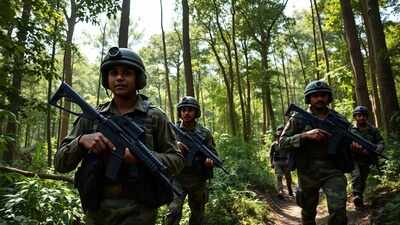ARTICLE AD BOX

Left-wing extremism (LWE) has long been one of India’s most persistent internal security challenges. In Odisha, where dense forests, hilly terrains and socio-economic marginalization intersect, the problem has been both complex and enduring.
In the past decade, there has been undeniable progress in containing the insurgency. The number of LWE-affected districts across India has declined sharply — from 223 in 2010 to 45 in 2023. Odisha has mirrored this trend, with significant reductions in violent incidents. The combined strategy of security force operations and development initiatives has contributed to a 77% drop in LWE-related violence. Better road connectivity, expanded mobile networks and greater state presence in previously inaccessible areas have strengthened governance in these regions.Beneath the improved security situation, deep-rooted socio-economic and political grievances continue to fester, especially among tribal communities. Many tribal populations had faced poverty, displacement, land alienation and lack of access to education, healthcare and employment.Successive govts have pursued a two-pronged strategy — combining robust security measures with development schemes. Security forces have worked to dismantle the operational and leadership structures of extremist groups.
Various govt programmes have sought to bring infrastructure, welfare schemes and economic opportunities to LWE-affected areas.While these efforts have yielded tangible results, they often remain top-down in their approach, with limited community participation. Development projects designed without adequate local consultation sometimes may not address the specific needs and aspirations of the communities they aim to serve.While security operations will remain essential to counter armed groups, they must be complemented by governance reforms and community-driven development. The ultimate goal should be to restore dignity, trust and inclusion in conflict-affected communities.



.png)
.png)
.png)
















 4 days ago
9
4 days ago
9








 English (US) ·
English (US) ·